Working the freelance hustle full time? Maybe you’ve realized how useful the structure of 9-to-5 in-person employment could be for establishing a meal plan.
When I used to work an office job with a consistent schedule, it forced me to plan ahead so I’d have lunch ready to bring with me every day throughout the week. And it was simple to make the end of my office workday a hard stop, with evenings free to prep favorite standbys or experiment with new, unfamiliar recipes.
But as a freelancer, I’ve noticed that I have a tendency to overcommit and prioritize deadlines before feeding myself well during the workday.
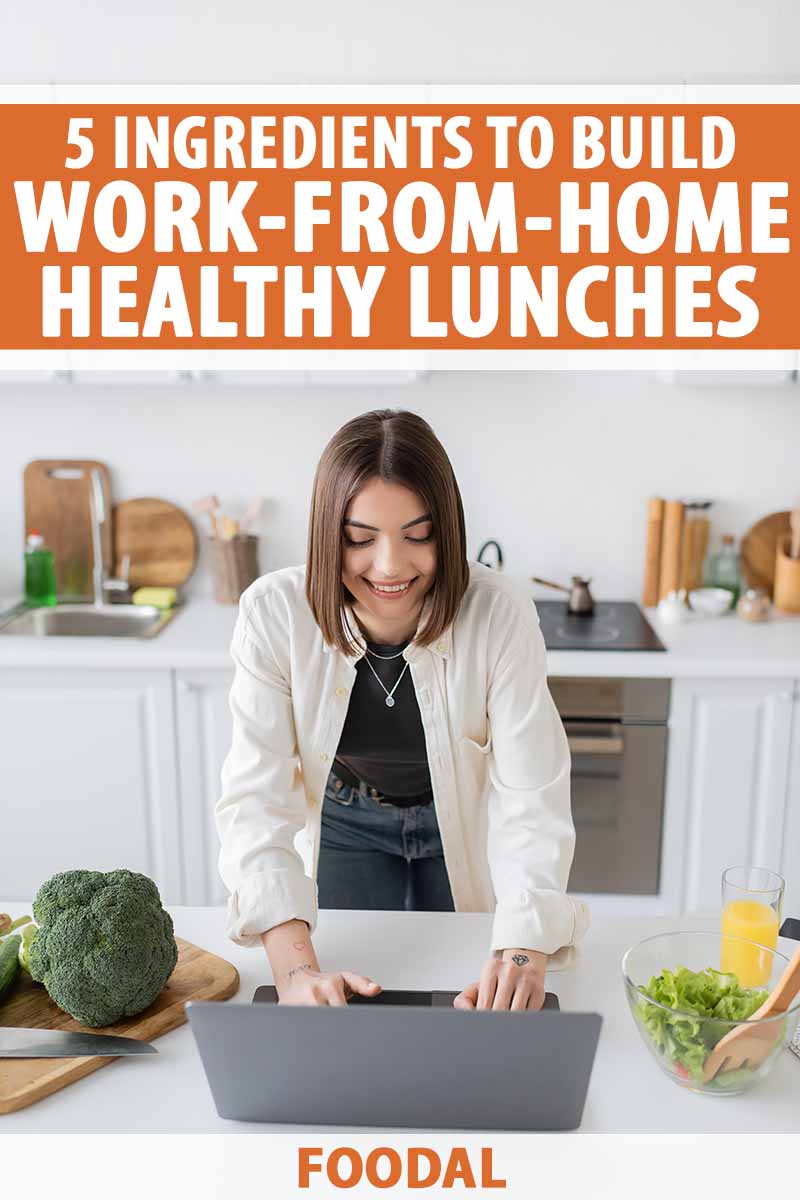
Sound familiar?
But it doesn’t have to be like that!
I’ve found that when I’m working just down the hall from – or sometimes in – my own kitchen, I have to prep ingredients in advance that will help to keep me from getting bogged down with making meals in the middle of my workday.
It’s helpful to have an arsenal of go-to ingredients I can always rely on to make a quick meal, especially when deadlines loom or meetings with clients require me to be somewhere in the outside world, arriving on time in something other than my pajamas.
Here are my top five essential components for pulling together healthy, speedy, and delicious work-from-home lunches that go beyond munching on a bag of chips or ordering a burger and fries.
These five ingredients are my foundational building blocks for creating an array of quick-but-healthy lunch ideas, from hearty stacked sandwiches to protein-packed salads.
In addition to the ingredients described below, I also recommend keeping your favorite healthy snacks – items like nuts, whole grain crackers, fresh and dried fruit, homemade granola, and the makings of your favorite smoothies – on hand to carry you through the day until dinner.
All those deadlines are approaching – let’s get your kitchen stocked ASAP!
Top 5 Ingredients to Make Healthy Work-from-Home Lunches
1. Eggs
The omnivore’s most versatile food is at the top of this list!
There are so many different ways to prepare eggs – choose cooking techniques you can adapt for make-ahead dishes, such as preparing eggs in an overnight casserole or a mini frittata format.

Mini Green Onion Frittatas – Get the Recipe Now
I tend towards cooking soft-boiled eggs with a thick, runny yolk, but hard-boiled eggs can also be made in advance.
Take advantage of the ease of boiling multiple eggs at one time! As long as you have a large enough pot to give the eggs room to cook evenly, you can save so much time by cooking a half-dozen eggs in a single go.
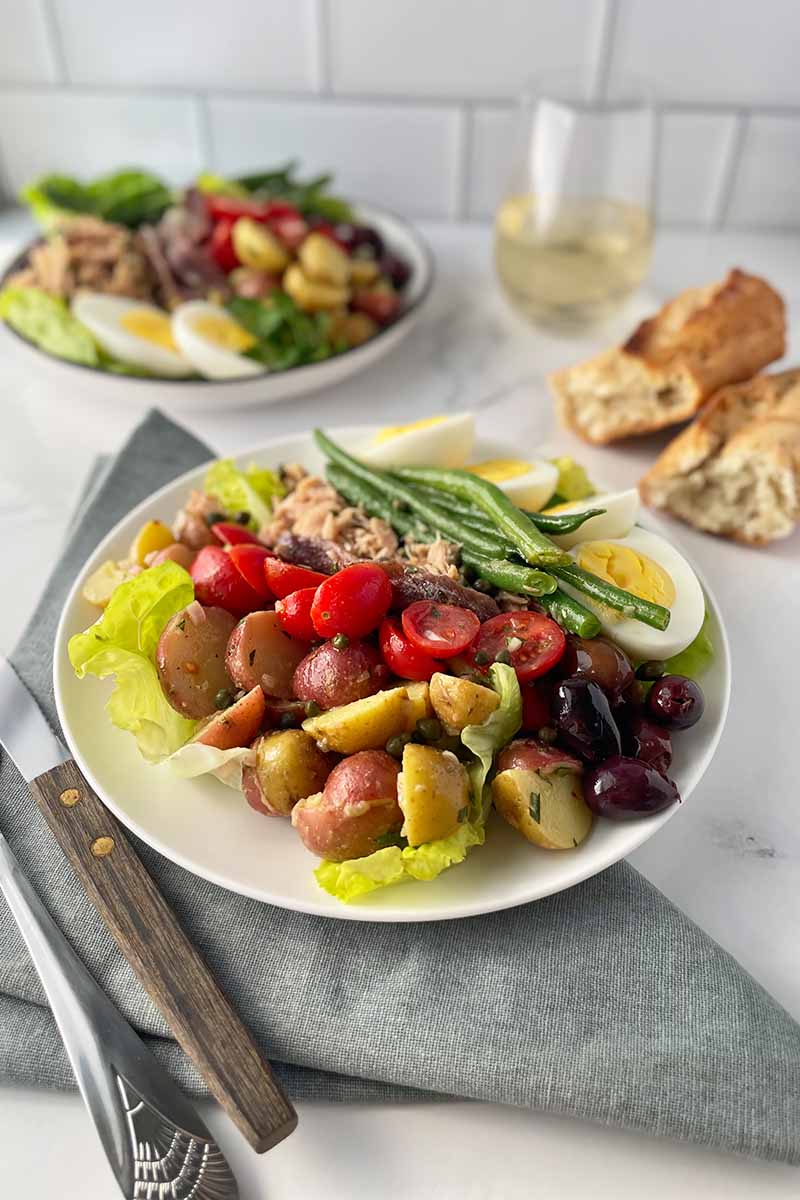
Classic Nicoise Salad – Get the Recipe Now
If you do have a few minutes to spend at the stove before going back to work, I recommend a crispy fried egg to top sandwiches, grain or salad bowls, leftovers, and more.
But for me, soft boiling is the best way to highlight the deep golden yolks of my local farm’s eggs, and the liquid yolk can also be used as a mini dip for roasted parsnip fries or oven-baked green beans.
Which leads me to…
2. Veggies
Whether your produce comes from a CSA box, farmers market haul, your own garden, or a supermarket shopping trip, it pays to prep fruits and vegetables in advance so they’re ready to do their duty on a busy workday.
Wash and dry salad mixes and hardy greens, then loosely pack them in airtight containers lined with a paper towel. This way, they’ll stay fresh longer and will be ready to toss, chop, blend, or cook when you need them.
If you are washing in advance, keep in mind that fresh greens will spoil more quickly. Plan to use them up in a couple of days, or wait to wash them until just before use to extend their life. A quick rinse followed by a run through the salad spinner shouldn’t interrupt your workday too much.
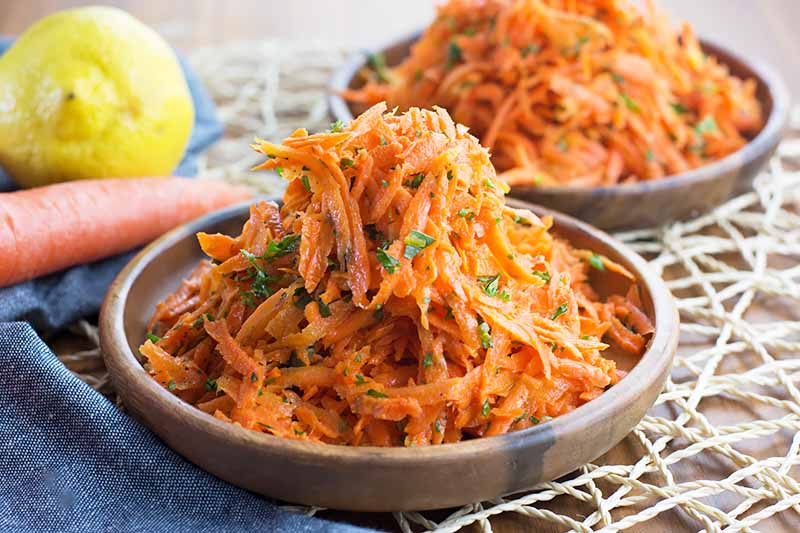
Herbed Lemon Carrot Salad – Get the Recipe Now
Consider which vegetables can be served raw, and have your favorites washed, dried, and prepped for salads and grain bowls that need a quick addition of freshness and a satisfying crunch.
Celery, broccoli, summer squash, cauliflower, carrots, tomatoes, green beans, slim asparagus stalks, bell peppers, fennel, and kohlrabi are all convenient choices that may be enjoyed raw.
For cooked veggies, my preferred method is roasting on a baking sheet at a high temperature, but I’m also a fan of steaming.
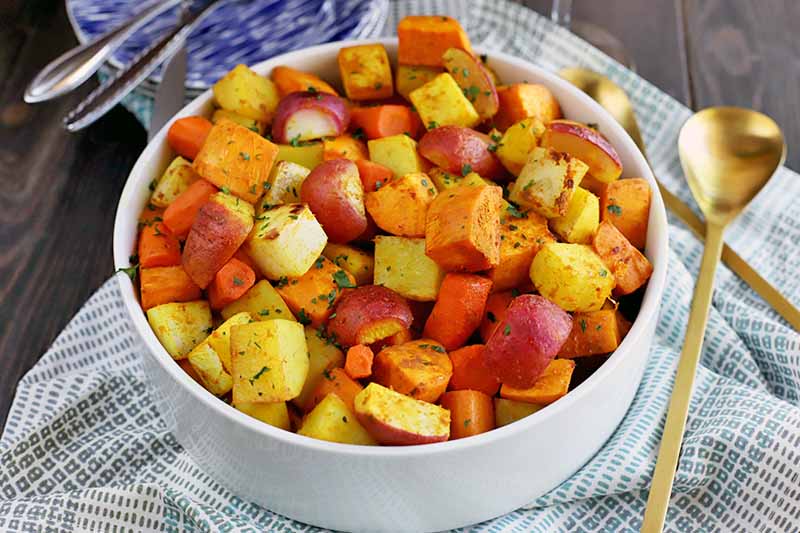
Roasted Fall Vegetables – Get the Recipe Now
I love munching on roasted root vegetables or winter squash during the fall and winter months, and I rely on quickly pressure-cooked broccoli, asparagus, green beans, and corn when they are in season.
If you’re about to shoo away the thought of bland steamed veggies, you should read our article on how to make steamed vegetables more flavorful – you’ll soon change your mind!
Your vegetables are now ready to fill out a grain bowl, or add flavor and texture to a quesadilla sprinkled with…
3. Cheese
Shavings of Pecorino Romano, swirls of ricotta, and crumbles of feta can transform a ho-hum dish into an inspiring meal – and you only need a little to achieve big and bold flavors.
I try to keep three basic styles of cheese in my fridge to optimize my mealtime customization: a hard, aged cheese like cheddar or Pecorino Romano, a creamy, dollop-worthy fresh cheese like ricotta or fromage blanc, and an acidic, tangy cheese like feta or chevre.
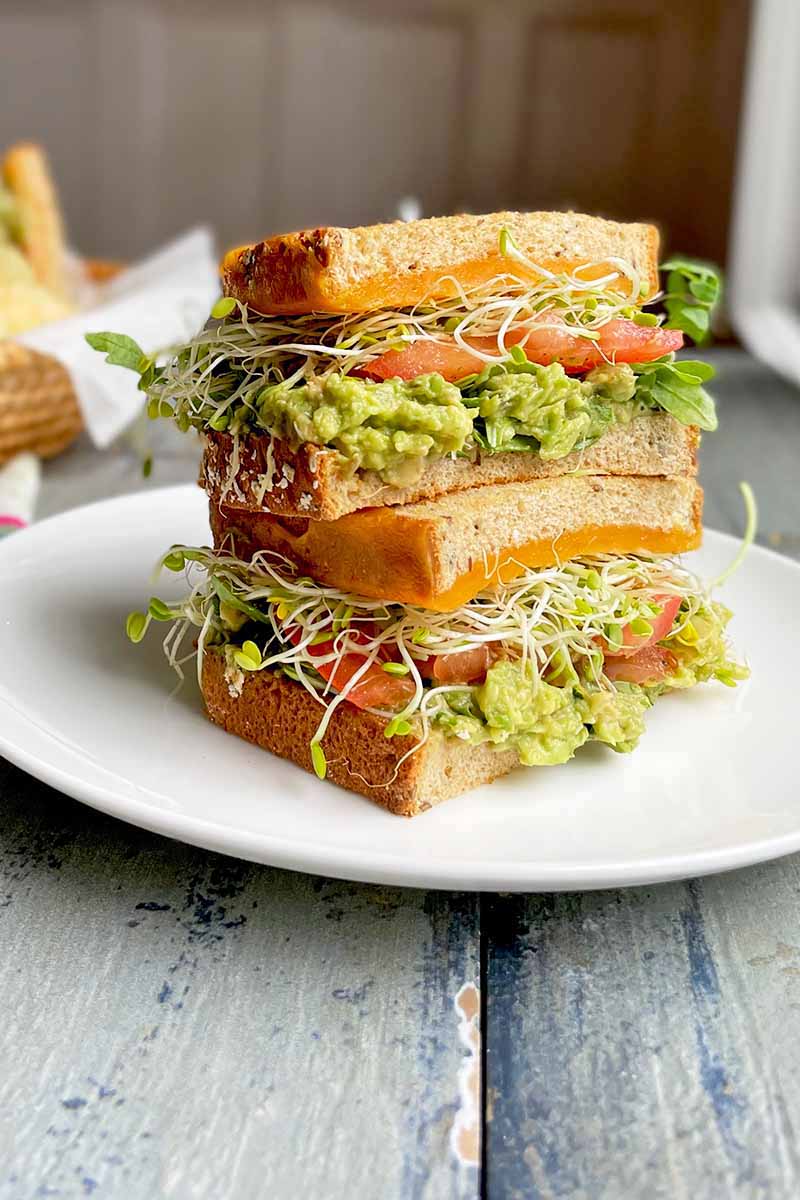
Sprouts, Avocado, and Cheddar Sandwiches – Get the Recipe Now
An aged cheese is perfect for grating and shredding, providing a salty, umami-rich bite to your dish. Cheddars can be sliced thinly and layered on sandwiches with low-sodium deli meats or assorted vegetables.
A super creamy fresh cheese can be swirled into soups for a small midday indulgence.
And crumbled feta or goat cheeses are great options for crumbling on slaws, salads, grain bowls, and other dishes.
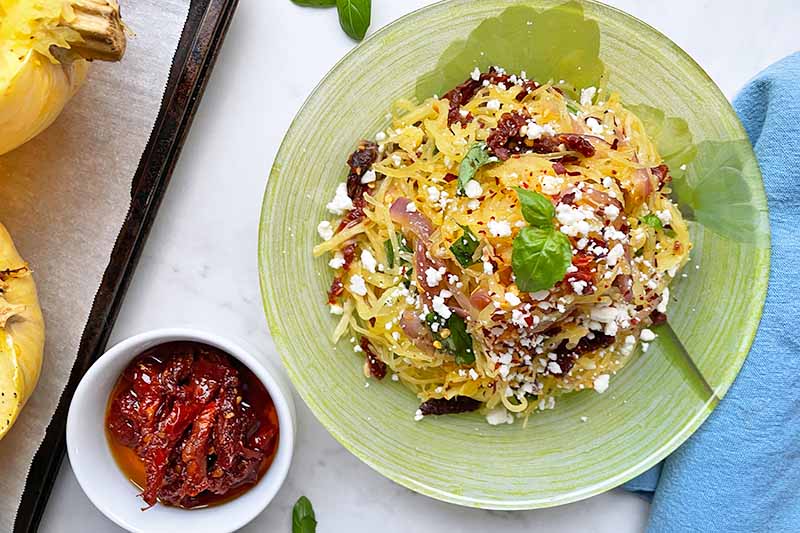
Spaghetti Squash with Sun-Dried Tomatoes and Feta – Get the Recipe Now
Depending on what you decide to use, cheeses can be cubed, shaved, dolloped, or crumbled to add flavor, creaminess, and protein to all kinds of dishes, including…
4. Grains
I have come to love the versatility of multiple seed and grain products – they make the perfect base for dishes that will keep you fueled and feeling full!
Options like rice, quinoa, bulgur, amaranth, millet, and grits provide a simple canvas for an artfully composed lunch of proteins like meat, eggs, or fish accompanied by raw or cooked veggies, berries, seeds, nuts – you name it!

Lemon Chicken Quinoa Bowls – Get the Recipe Now
If you are pressed for time, choose a base that won’t take too long to cook – quinoa has a particularly short cooking time on the stovetop.
And there are various methods available to quickly prepare certain grains. You might like to study our tutorial for cooking different varieties of rice in the electric pressure cooker.
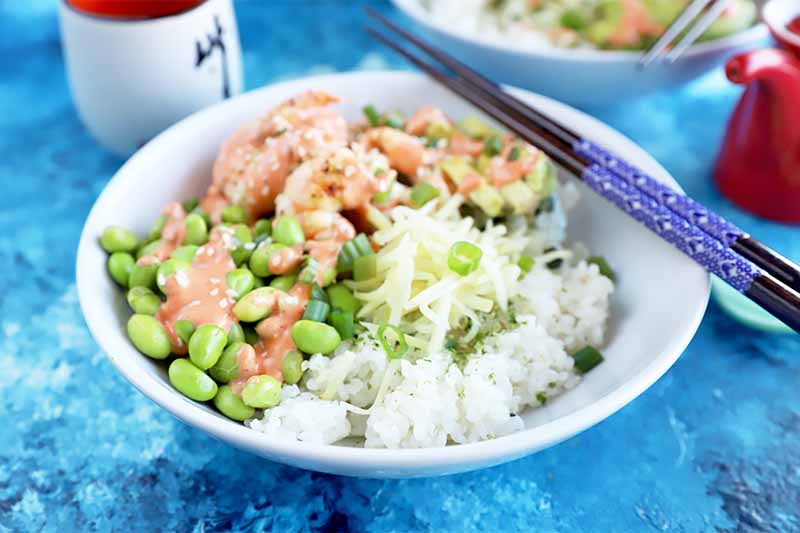
Sushi Bowls with Sriracha Mayonnaise – Get the Recipe Now
But before you serve up your wholesome and satisfying grain bowls, consider reaching for…
5. Sauces, Dressings, and Toppings
All those tasty ingredients are delicious, but sometimes it takes a little extra flavor to tie them together to create a proper meal you’ll want to make again week after week.
Sauces, dressings, and toppings can really elevate anything from freshly prepared panini and salads to leftovers.

Vegan Aquafaba Chipotle Aioli – Get the Recipe Now
While you can purchase your favorite condiments at the store, easy, homemade recipes provide a fresh new touch.
Pureed pestos and silky aiolis are perfect for drizzling, spooning, or smearing.
While a classic basil pesto is a summertime staple, you can use whatever soft, fresh herbs and nuts you have on hand to whiz up with olive oil, garlic, and salt in the food processor for a quick flavor punch. Or for a different take, try our sunflower seed and spinach pesto.
While pestos freeze well – freeze small servings ice cube trays! – aiolis like our creamy garlic aioli should be made and used fresh within a couple days.
I also keep a rotating bottle of homemade vinaigrette in my fridge, adding some combination of honey, mustard, vegetable oil, and vinegar to shake together for salads in new combinations and featuring new flavors from week to week.
You’ll like our recipe for a honey balsamic vinaigrette, which you can make in just five minutes!
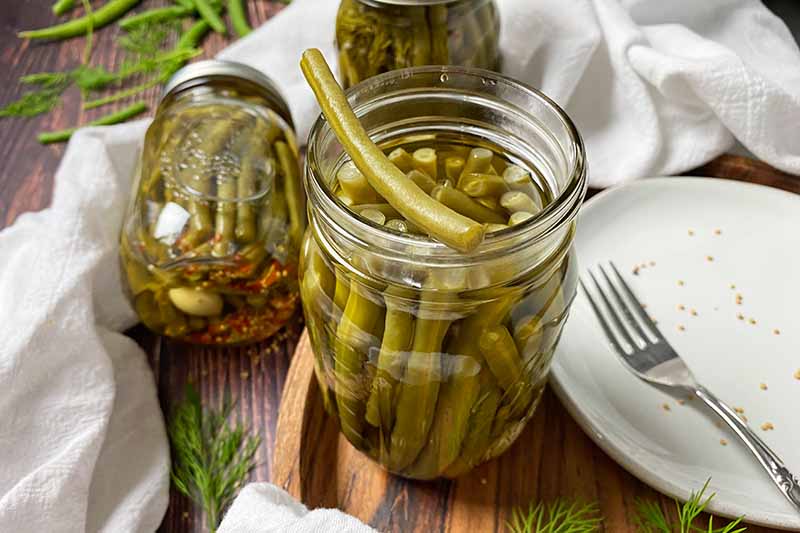
Pickled Dilly Green Beans – Get the Recipe Now
Other than salads and dressings, consider making or buying a range of other toppings to stock your fridge and pantry, to keep things interesting.
Recipes like homemade spicy nuts, mouth-puckering pickles, and savory granola serve as edible accessories to a dish, providing textural contrast and big, bold flavors.
Lunch Is Served
Eating healthy meals at home is possible, even if you don’t have a lot of time to make them.
Just prepare any of these recommended ingredients and recipes at the beginning of the week, and think of your fridge, freezer, and pantry as staging areas that hold the mise en place required to assemble a great lunch in a snap.
When the ingredients are already prepped and ready to go, you can combine them into whatever tasty combination strikes your fancy on a given day.

I hope these tips give you the inspiration to quickly and healthily fuel your freelance or work-from-home hustle.
What are your favorite ways to feed yourself from your home office? Share your best advice in the comments below!
Ready to learn more? Continue growing and developing your culinary and home life skills, one article at a time! Take your time and read through our entire collection of knowledge-based articles, or head straight to these guides next:
About Alex Jones
Alex Jones is a local food consultant and writer based in Philadelphia. Evangelizing about local food is second nature to Alex, whether she’s working an artisan cheesemaker’s farmers market stand or developing growth strategies for her favorite small-scale artisans. Her favorite areas to work in currently are the artisan cheese and pastured meat supply chains. When she’s not working, Alex spends her time managing her usually-overstuffed fridge, growing vegetables, foraging for fruits around the city, playing tuba in a disco cover band, and hanging out with her partner Dr Thunder, Philadelphia’s karaoke superhero, and their two cats, Georgia and Li’l Mama. Alex’s favorite food is some kind of cheese on some kind of bread.





Well this is very well put and organized, so thank you for that. When it comes to eating well and filling up at home, the most important thing for me is having the ingredients on hand, so the more that I can see tips like this the more it really helps me plan ahead so that I can be successful in my home cooking. I agree with the eggs and veggies, and those are often the best ways to get full and energized for a day of work. Thank you again for sharing.
These were some smart ideas. Thank you.
I didn’t know that quinoa is a berry and not actually a grain, I truly learned something new today. Thanks for expanding my culinary knowledge!
I have to agree with you, pan roasted veggies are the way to go! We tend to put in carrots, whole mushrooms, and sliced zucchini. Top that with a little olive oil and seasoning salt and you have everything you need for a mouthwatering dish (or side with a roast!).
This is so true! I always meal prep, since I am a stay at home, work-from-home mom. I am generally very busy throughout the day so I tend to snack, rather than sit to enjoy a meal. In a typical lunch, I include 1 hard boiled egg cut in half,small handful of nuts, side of spinach (lightly drizzeled in fat free ranch), club crackers, and strawberry chunk. Its very healthy and balanced and keeps me going for the day.
These are some good ideas! I like veggies with hummus and some pita bread or crackers to go with them. I never thought about veggie sandwiches before, and all the suggestions look delicious! I like to bring couscous with my lunch, because it pairs well with a lot of things, or it’s good on its own with a splash of olive oil and a pinch of salt. If you need a little more food, eggs and veggies can be added to instant noodles and broth to make them a little healthier.
What I’ve probably enjoyed the most about working from home is being able to set aside more time for being in the kitchen. I slice my day in half at noon to take a break, make a nice salad and cook something simple, have a leisurely lunch and then get back to work, seeing I can work into the evening if I need to. It’s a lot less tiring than having to work 8 hours straight behind a desk, and I wish more companies would allow their employees this opportunity. Thanks for the great tips, the roasted veggie salad looks unbelievably good!